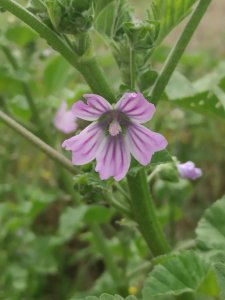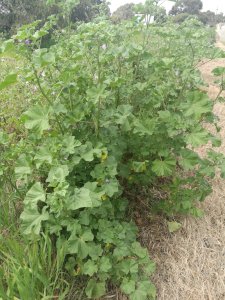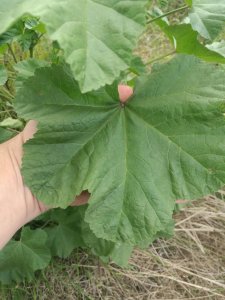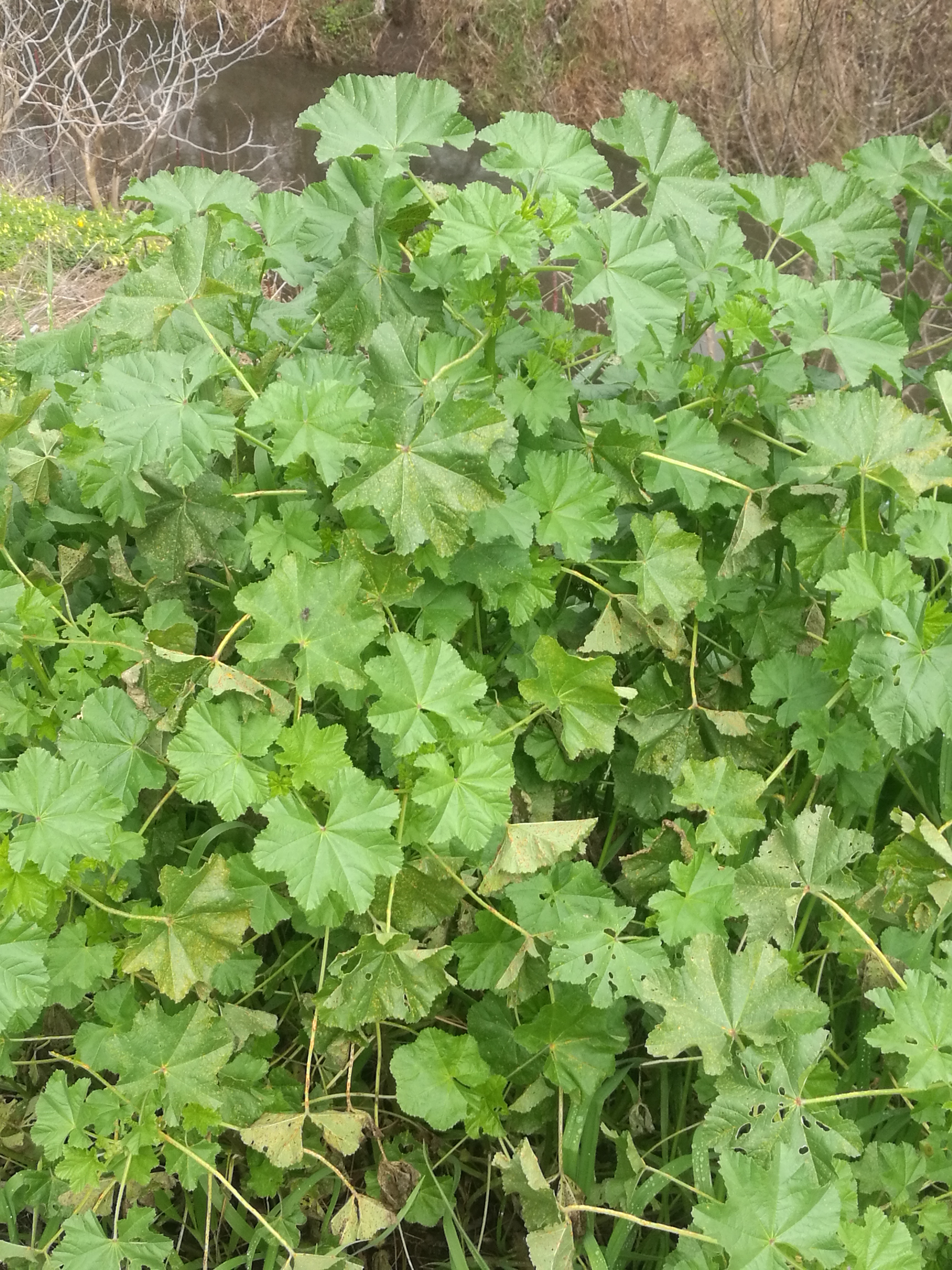
Common names: Mallow, Buttonweed, Cheeseweed, Cheeseplant, Small Flowered Mallow, Tree Mallow
Taxonomic name: Malva species
Family: Malvaceae
Uses: food, sore throats, sinusitis, inflammation anywhere
Area of origin: Eurasia, Africa
Warnings: none
Here in S.A. our Mallow isn’t the Marshmallow of renown. Ours is generally Small-flowered Marshmallow (Malva parviflora), that’s the small one around on the roadsides going brown at the moment. It can also be Malva nicaeensis, which is a bit bigger or Malva arborea which is bigger still.
So…what’s good about our Mallow?
Mallow is highly nutritious and grows most of the year round, so it’s easy to get when you get the urge. Mallow stores its energy as the dietary fibre, inulin, rather than sugars. This makes it a boon for diabetics. Inulin also helps feed out gut bacteria and keeps them pumping out their goodies. Mallows also contain Vitamins A,B,C,E flavonoids; essential fatty acids, and important minerals like calcium, iron, magnesium, zinc, potassium and selenium.
Mallow contains a mucilage – that’s a sugar which, when exposed to water, turns to a slimy substance that coats and soothes dry and irritated tissues. In herbalism, that property is called ‘demulcent’. Mallow is soothing and kind of sweet. In fact, ‘Malva’ comes from the Greek ‘malaxos‘, which means ‘to soften’. It’s great when there is any dryness, whether internal or external. In my opinion, it’s s bit of a tonic too.
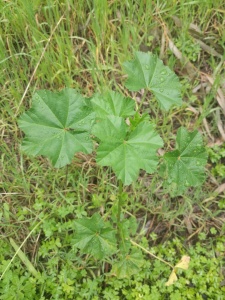
We can use any part of the Mallow, but leaves and fruit are the most easily accessible. We don’t need to worry about the root with ours, as the Americans and Europeans do, but we do miss out on it’s concentrated mucilage, although you can dig up ours if you want – it won’t hurt.
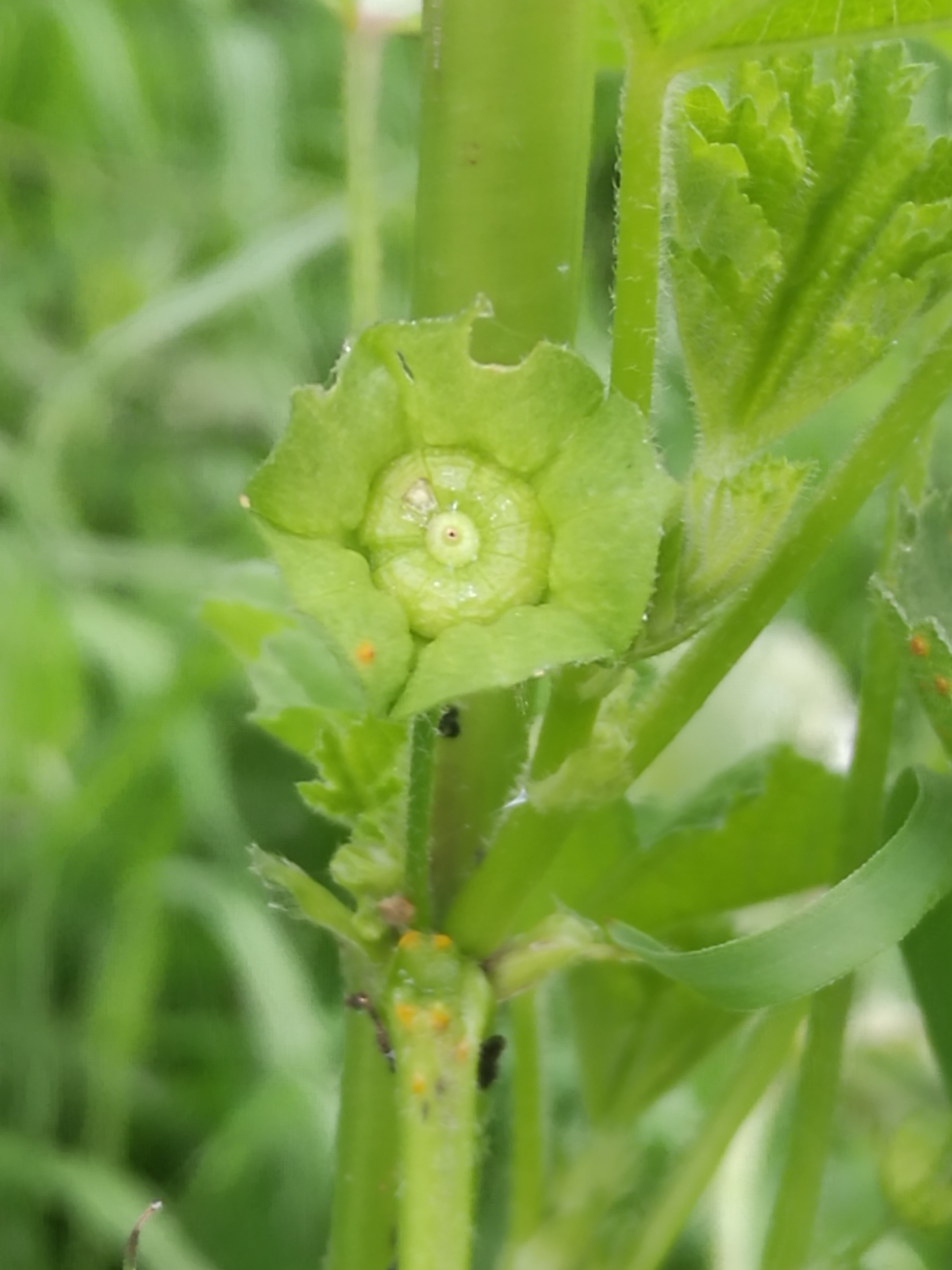
To me, the seeds are the most effective part, chew on one for a bit and you will feel a smooth slime in your mouth. The longer you keep it in your mouth, the slimier it seems to get. Fresh and green seeds are best, but the dry seeds in summer are reasonably effective.
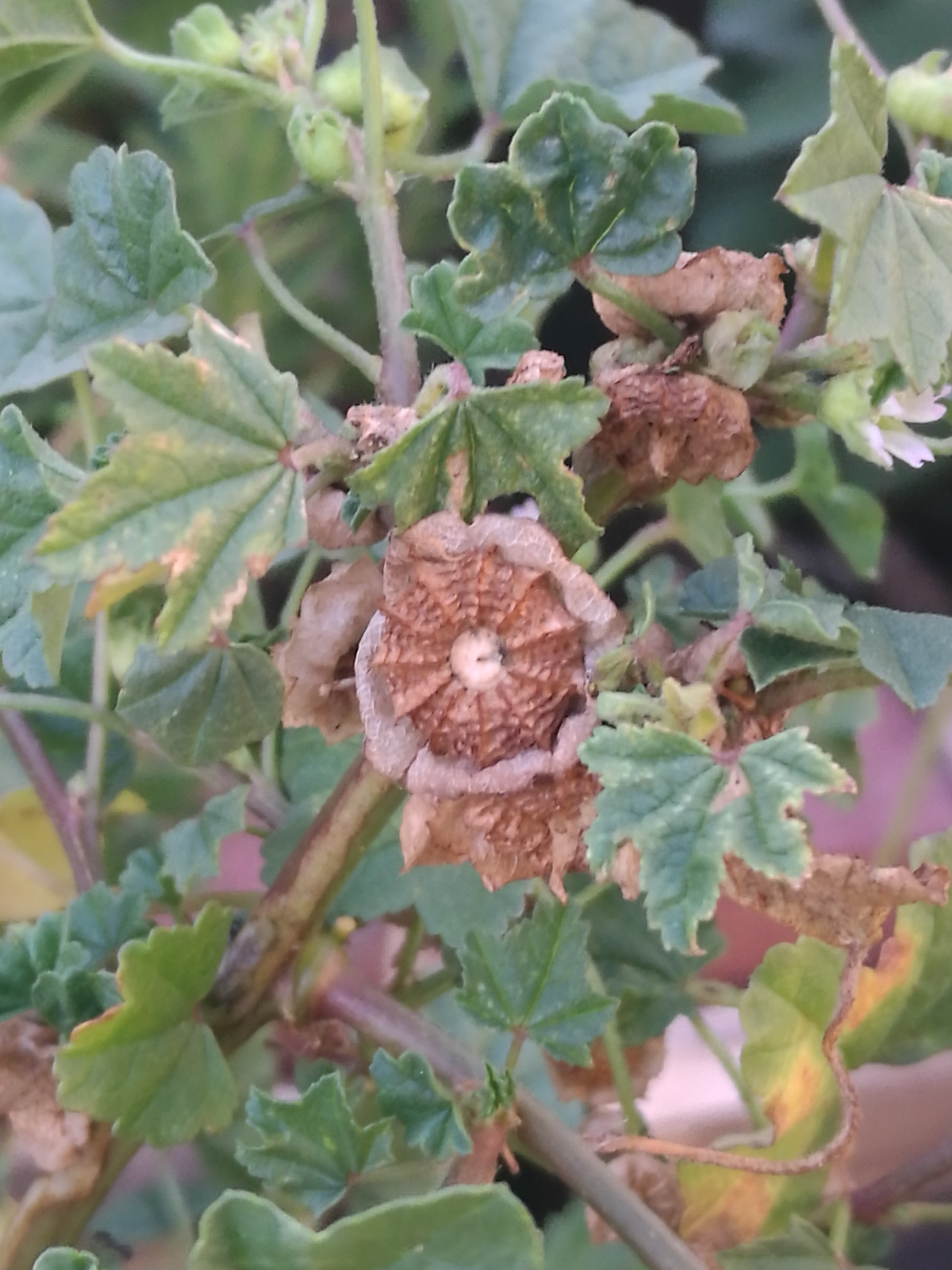

Mallow soothes and moistens dry and irritated tissues. The demulcent property isn’t restricted to direct physical contact, it can also affect internal tissues suffering from dryness and atrophy. That makes it great for rashes, skin inflammations, even sunburn. It can be taken internally to soothe sore eyes and even hay fever and urinary tract infections.
An interesting effect is that the demulcent effect of Mallow can even reduce your mucus production. This is great in cases of hayfever! I reckon that by adding mucus, it suggests to the body that it doesn’t have to produce as much and helps you to produce less. I know of several people around Gawler who have benefitted from it this.
You can get the maximum benefits from Mallow by making a cold infusion. That extracts it’s properties more effectively than hot infusions. A cold infusion is made by using room temperature water on the leaves and seeds and leaving them covered for one hour. Then strain and drink. You can leave it longer. I like to make overnight infusions of most of my daily herbs.
There are a few Mallows around this way, here’s how to tell them apart:
Tree Mallow (Malva arborea)
Malva arborea is probably our biggest Mallow (arborea means ‘tree like’ after all). The flowers remind me of Hibiscus flowers (they are related) and the petals overlap, unlike Malva nicaeensis, which it is sometimes confused with. The other distinguishing feature is the three bracts under the flower/seeds – they are large, rounded and hairy.
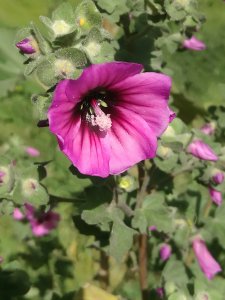
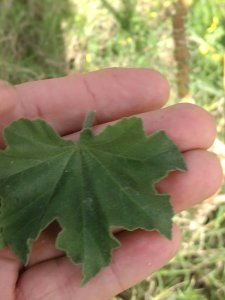
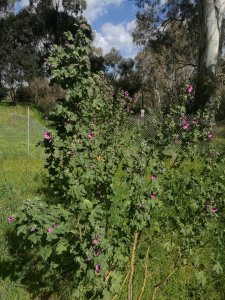
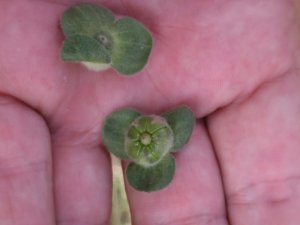
Small-flowered Mallow (Malva parviflora)
Malva parviflora grows up to waist high, though it can develop as an almost prostrate form with regular, overzealous Council mowing. It has small, pale pink/white flowers in the leaf junctions. This is the most common Mallow in this area.
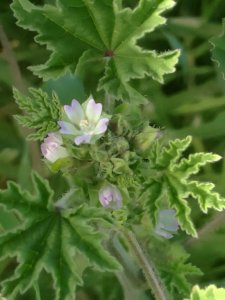
Mallow (Malva nicaeensis)
Malva nicaeensis grows up to shoulder high around this way (it’s often shorter in other areas) has pale purple flowers with darker purple veins. The petals don’t overlap as in Malva arborea. The leaves are soft and hairy and can grow to be huge.
